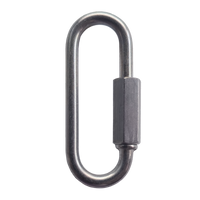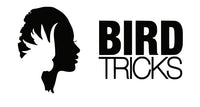FAQ
Where should I start with training my bird?
We recommend you start with our Beginner Level Course. This course is the foundation to understanding how your behavior influences your bird's behavior - good or bad! It's all about getting you started on the right foot with health, diet and training.
Can I buy a 1lb sample bag of your pellets for my bird to try?
Yes! We offer a 1lb sample bag size of our pellets paired with our Birdie Bread here. The reason we don't sell just the sample bag of pellets on its own is we like to ensure you and your bird are set up to succeed in your diet conversion by including our birdie bread in this package. This way you can use the birdie bread as a diet conversion tool if needed, without going through your sample bag of pellets too quickly. Check out some of our free diet conversion downloads here.
What if I don't like the mystery in the mystery toy boxes? Can I specify which toys I want?
Yes! We love creating custom boxes of toys for you and your bird. This is the process of creating your custom box of bird toys:
1. What's your budget? Tell us how much you want to spend including shipping charges.
2. What size of toys do you want (small, medium or large)?
3. What kind of toys do you want (foraging, chunky, shreddable, kabob or a mix)?
4. If you happen to know the name of the toy(s) you want and are getting that specific, please include it!
After we have this information from you, we get to work creating your custom box, take a picture and send it to you for your approval. If you approve, a custom invoice is created for you to pay. Once paid, it lands in our shipping queue to ship the next business day.
Intentional custom boxes have a flat rate of $39 shipping for anything 3 lbs and under.
What is a "training diet"?
The use of the word "diet" seems to scare everyone off... we feed our birds the bond building breakfast which is explained in detail as part of our Beginner Course as well as inside our Natural Feeding System Cookbooks.
This is the way we feed our birds whether we are training that day or not. The first meal of the day is our bond building breakfast, which comes from our seasonal recipes in our cookbook. It's mostly comprised of raw veggies, legumes, grains and sprouts. The second meal in the evening is our organic pellets.
When fed healthy foods, our birds not only feel better but they act better too! And this way the value for nuts and seeds as treats goes wayyyy up and you can actually start shaping behaviors. We use nuts, seeds and fruit for rewards. Keep in mind our feeding system is designed for all types of parrots except the lory or lorikeet. For those species that require more seed in their diet, we recommend they forage for it through toys when you can't offer it through training with you.
How do I get my bird to go back in its cage?
How do I get my bird to come out of its cage? What do I do to bond with my NEW bird?
Don't be in a rush. Let your bird know through your body language that it has choices! The more you allow a bird to say no, the more it will say yes.
Here is what my first day with a new bird looks like and how I go about bonding:
Notice: No force, only clear communication. I set boundaries early on, no exceptions.
How old does my bird need to be to start training?
Formal training, which includes using treats and food as a reward should not be done until a bird is fully weaned.
Capturing (ie: rewarding a bird for natural behaviors it does without prompting) can be done at any age a bird will take a food reward, or other type of reinforcement (praise, attention, etc)
Baby birds can be taught basic handling (how to perch on your hand, how to transfer from hand to hand, etc.) through consistency in your handling. I demo this in the video below with a client and her baby blue and gold macaw:
How do I get my bird to step up?
Depending on your bird's level of fear or aggression, depends on which method you use to teach your bird to step up.
For baby birds, its done through you handling your bird properly (see above video). For fearful birds, it's recommended to start with target or touch training (instead of asking them to directly step up, you ask them to target instead and your hand is the obstacle in doing so):
If your bird is aggressive, and tends to want to use his beak to step up before offering his foot, you need to be consistent with only allowing the "foot first" step up. This is important in clear communication of knowing your bird genuinely wants to step up and won't decide to bite instead. Many parrots create habits of using their beaks to step up which is an important habit to break.
Here is what this looks like:
Sometimes parrots respond better to "stepping back" instead of stepping up. More step up training tips here and here.
Is it bad to let your parrot on your shoulder?
My basic rule of thumb is if your bird comes down the first time you request it to, it can be allowed on your shoulder. If your bird races to get to your shoulder and refuses to come down, it should not be allowed up there. If it nips or bites while on your shoulder, it should not be allowed up there.
Here are my shoulder rules:


